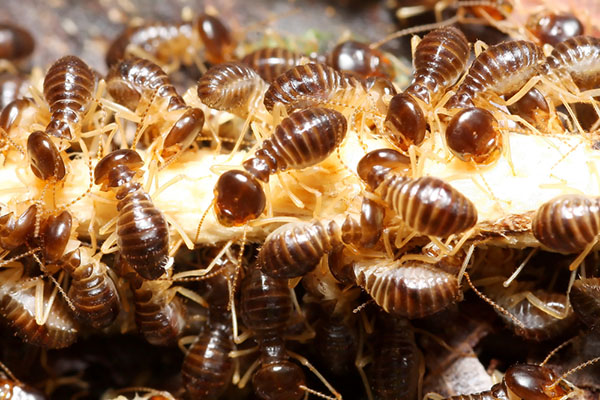While termites are drawn to wood, there are other factors that may lead to a termite infestation too. Learn what causes termites and what to do about it.

1. MOISTURE
Subterranean termites, who build their colonies in the soil, are attracted to moisture. Standing water in or around your home's foundation creates an attractive environment for these termites. Leaky pipes are not just a plumbing issue and should be addressed before creating an opportunity for termite infestation. You should also clean your roof gutters and take steps to ensure there is proper drainage around your home. Finally, check that your foundation is properly ventilated and trim back or remove any landscaping that could allow humidity to build up in your home's crawl space.
2. WOOD AND WOODEN STRUCTURES THAT COME INTO CONTACT WITH YOUR HOME
Even if the soil around your home has been treated by a pest control specialist, wood that serves as a bridge between the ground and your home may create a point of entry for termites. Termites feed on cellulose, an essential component of wood. Subterranean termites will search out food sources that exist above ground in addition to their more readily available food supplies. Any wood that comes into contact with your home's exterior may create an opportunity for termites to infiltrate your home's interior. Remove any stumps, vines, mulch, trellises or other exterior wood such as stacked firewood that is in close proximity to your home's foundation, especially if your home has wooden siding. Note that your roof can also be vulnerable to termite infestation. Trim back any tree limbs that are resting on your roof or touching wooden structures such as eaves or window framing.
3. OPENINGS IN YOUR HOME'S FOUNDATION, ROOF, WALLS, ETC.
In their search for moisture and food, termites will take advantage of any breach in your home's integrity. Even cracks in your foundation's concrete offer opportunities for subterranean termites to gather materials for the construction of their mud tubes, the tunnels by which they travel in their foraging. Periodically inspect your home's entry doors and windows, and reapply caulk where any might be distressed or missing. Similarly, look for any loose or defective seals where electrical conduit or plumbing lines enter your home. And if you are aware of damage to your shingles, fascia boards or eaves, have it repaired immediately. Even these minor fixes can help you defend your home against a termite infestation.
4. GEOGRAPHY
You may live in a state or region that is particularly susceptible to termite infestations. Homeowners in warmer, wetter states such as those of the South and Gulf Coast are typically more likely to experience difficulties with termites. You can also consult the United States Forest Service's map of Termite Infestation Probability (TIP) Zones to determine your home's level of risk to infestation due to local environmental factors. Though some areas of the country have an increased termite presence resulting in more homes attacked, remember that termites are found in every state except Alaska, so don't let your guard down.
Finally, if you do notice termite damage that has never been repaired, or if you suspect that your home may have a termite problem, do not put off contacting a professional termite control company to get an expert opinion.



